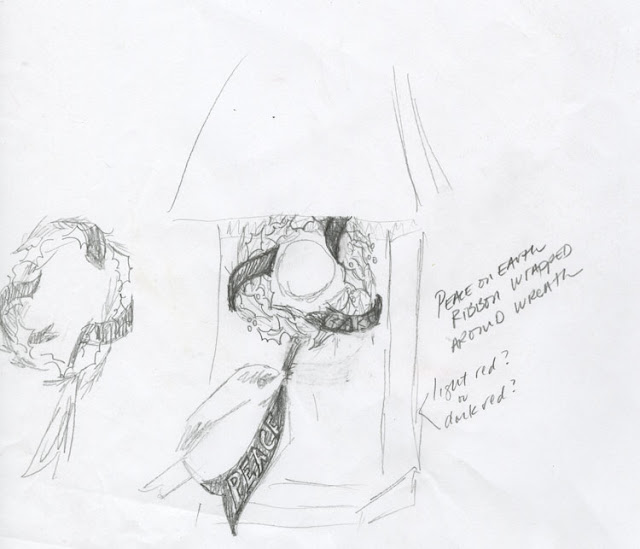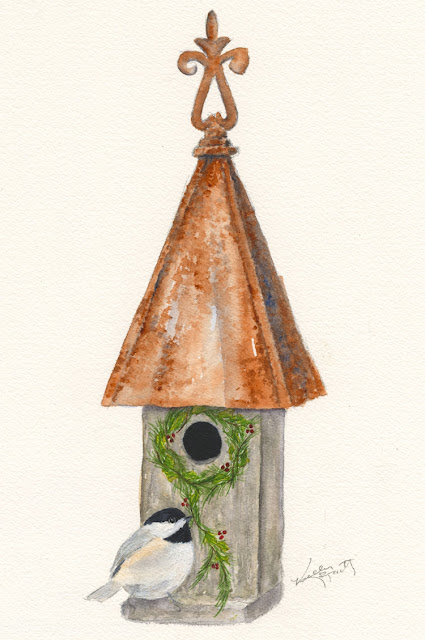Once a month, I'm a contributor on the "Birding is Fun!" blog. This was my November 25, 2012 post...
Here in Cincinnati (
as in other midwestern cities) we're excited because crossbills have moved down from the north for a winter visit. Both Red and White-winged Crossbills are being reported daily at local cemeteries, so since Matty was off school the Wednesday before Thanksgiving, we headed up to
Miami Cemetery near
Caesar Creek State Park in Waynesville, OH to see what we could see...
 |
| A White-winged Crossbill was waiting for us when we got out of the car! |
We didn't even have to look for the birds. As soon as we stepped out of the Jeep, three White-winged Crossbills flew in the huge Eastern Hemlock tree right next to us. Their chittery flight chatter gave them away, and we quickly focused in on them with binocs. This was a life bird for Matty, so he studied them carefully.
"Wow! You really can see their crossed bills!" was the first thing out of his mouth.
"I know...amazing" followed out of mine. We watched them in silence as they moved from cone to cone, separating the bracts and extracting the seeds with their tongues.
"Wow..."
 |
| A White-winged Crossbill holds an eastern hemlock cone in its bill... |
While we watched them, we tried to figure out how they were cracking open the cones to get to the seeds. We could see them working the bracts apart, but had no idea how they were using their crossed bills to do it. Later that night, I got a few of my bird books down to see if I could find out. The answer was easy to find and was in the first book I opened. Bernd Heinrich, in his book
Winter World, offered an explanation. He wrote that a crossbill's upper bill is two centimeters long and crosses over a one-half centimeter shorter lower bill. To open a cone bract, the bird inserts a partially open bill into a bract, then closes its bill. When closed, the bill tips separate the bract laterally by about 3 millimeters, just enough for the bird to open its bill slightly and use its barbed tongue to dip in and grab the seed (Heinrich,
Winter World, page 37).
 |
| White-winged Crossbill high in an Eastern Hemlock Tree. You can just make out his crossed bill in this photo. |
Eventually, Matty went off looking at tombstones and did a few rubbings to try to figure out dates and names on the oldest and most weathered stones, and I did a quick sketchbook entry to record our day. We had been to
Caesar Creek earlier for a picnic lunch and had seen lots of birds, but the White-winged Crossbills stole the show. In 2009, White-winged Crossbills showed up for a while in Cincinnati, and it was exciting too, but this year, the irruption is much bigger. I can't wait to see what else winter brings!
 |
| ...sketchbook entry completed in the field. It was very warm that day...65 degrees F. |
To round out the post, I did a quick watercolor of one of the White-winged Crossbills we saw that day. I can't wait to get back out to see if more of these interesting birds are around. If you haven't done so already, you might want to pop over to the ABA Blog to read Nate Swick's post, "Help Monitor the Red Crossbill Invasion" (
click here). You also might like Jim McCormac's post (
click here) for a photo of a White-winged Crossbill's long tongue as it nabs a seed.
 |
White-winged Crossbill in the Hemlock Tree
(watercolor sketch) |
This part wasn't in my original "Birding is Fun!" post, but after reading Matty's field journal entry from that day, I thought I'd include it here...
Nov 21, 2012, Miami Cemetery (near Caesar Creek)
I had been thinking as I walked through the cemetery that everybody buried here had a story, but for most, the stories had been lost to time. I knew none of them, but I wanted to, so I set out to identify one of the most weathered and dilapidated gravestones I could find--the gravestone of someone who had been forgotten. I took a rubbing, and slowly a name started to show through, "Wife of Prof. J. W. Stewart." The gravestone next to the little weathered and unreadable gravestone was large and not nearly as weathered, "Prof. J. W. Stewart" stood out clearly. At least I knew a little bit more about the forgotten grave, but not a lot. I wondered what Prof. Stewart taught, so I did a quick search on my phone to see if there were any records out there, and amazingly a reprint of a newspaper article from July 25, 1907 from The Western Star of Lebanon, OH popped up. In the article, I was able to find out Prof. John W. Stewart was the first African American mayor of Harveysburg, and his wife was Virginia Singleton of Harveysburg! So the little weathered and forgotten gravestone belonged to Virginia.
There are always connections, there is always significance to be found in the insignificant. Matthew Riccetti.
Click here for a link to the reprint of the newspaper article from
The Western Star of Lebanon, OH from July 25, 1907 about Professor John W. Stewart, the first African American mayor of Harveysburg, OH.
 |
| Angel statue at Miami Cemetery in Waynesville, Ohio. |





































